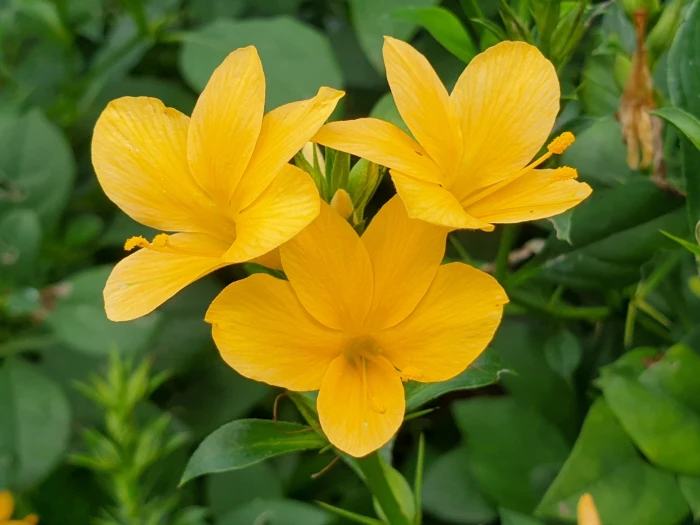Porcupine Flower
(Barleria prionitis)
Porcupine Flower (Barleria prionitis)
/
/

Aravinth
CC BY 4.0
Image By:
Aravinth
Recorded By:
Copyright:
CC BY 4.0
Copyright Notice:
Photo by: Aravinth | License Type: CC BY 4.0 | License URL: http://creativecommons.org/licenses/by/4.0/ | Rights Holder: Aravinth | Publisher: iNaturalist | Date Created: 2023-02-16T08:30:02Z |

























Estimated Native Range
Climate Requirements for Sumter, South Carolina
| This Plant | Your Site | Plant Suitability for Your Location | ||
|---|---|---|---|---|
| • Precipitation | 34" - 86" | 47" | Aquatic | Aquatic |
| • High Temp. | 86°F - 105°F | 92°F | Your summer temperatures are normal for this plant. | Excellent |
| • Low Temp. | 50°F - 70°F | 33°F | Your winter temperatures are normal for this plant | Excellent |
This plant should grow very well at your location without additional irrigation.
Summary
Barleria prionitis, commonly known as Porcupine Flower or Spiny Barleria, is a semi-evergreen shrub native to a range of habitats including dry deciduous forests, thorn scrub, and grasslands across Southeast Asia, China, the Indian Subcontinent, the Arabian Peninsula, and northeastern Africa. It typically grows up to 6 feet tall and is characterized by its much-branched form, spiny leaf axils, and elliptic to ovate leaves. The plant produces showy yellow to orange flowers, which are tubular and bloom in the cooler months, providing a splash of color when many other plants are dormant.
Porcupine Flower is valued for its ornamental flowers and is often used as a hedge plant due to its spiny branches, which can deter intruders. It is also known for its low maintenance requirements, thriving in full sun to part shade and preferring well-drained soils. In traditional medicine, various parts of the plant are used to treat a range of ailments. However, gardeners should be cautious as Barleria prionitis can become invasive outside its native range, and it is advisable to consult local regulations before planting.CC BY-SA 4.0
Porcupine Flower is valued for its ornamental flowers and is often used as a hedge plant due to its spiny branches, which can deter intruders. It is also known for its low maintenance requirements, thriving in full sun to part shade and preferring well-drained soils. In traditional medicine, various parts of the plant are used to treat a range of ailments. However, gardeners should be cautious as Barleria prionitis can become invasive outside its native range, and it is advisable to consult local regulations before planting.CC BY-SA 4.0
Plant Description
- Plant Type: Shrub
- Height: 2-3 feet
- Width: 2-3 feet
- Growth Rate: Moderate
- Flower Color: Orange
- Flowering Season: Fall, Winter
- Leaf Retention: Evergreen
Growth Requirements
- Sun: Full Sun
- Water: Medium
- Drainage: Medium
Common Uses
Border Plant, Butterfly Garden, Drought Tolerant, Low Maintenance
Natural Habitat
Dry deciduous forests, thorn scrub, and grasslands
Other Names
Common Names: Porcupine Flower, Thorny Bush, Jhinti Katsareya, Yellow Barleria
Scientific Names: Barleria prionitis, Barleria bispinosa, Barleria bispinosa, Barleria prionitis var. madagascariensis
GBIF Accepted Name: Barleria prionitis